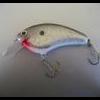

BobP replied to Andy007's topic in Fishing Rods, Reels, Line, and Knots

BobP replied to BassinCali's topic in Fishing Rods, Reels, Line, and Knots

BobP replied to Mike son's topic in Fishing Rods, Reels, Line, and Knots

BobP replied to Andy007's topic in Fishing Rods, Reels, Line, and Knots

BobP replied to aku17's topic in Fishing Rods, Reels, Line, and Knots

BobP replied to Robert Riley's topic in Fishing Rods, Reels, Line, and Knots
We have placed cookies on your device to help make this website better. You can adjust your cookie settings, otherwise we'll assume you're okay to continue.

